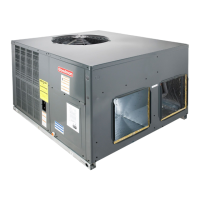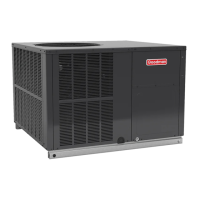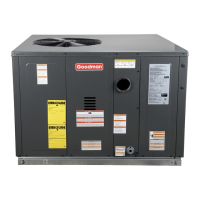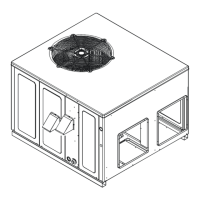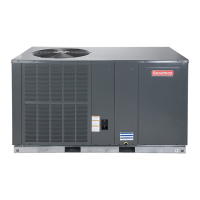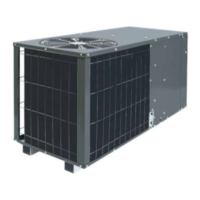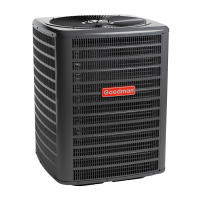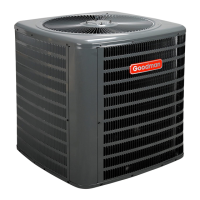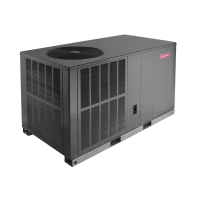SYMPTOM
POSSIBLE CAUSE REMEDY
a. Restriction in liquid line or flowrator
a. Remove or replace with proper size flowrator.
High head - high or normal suction
b. Overcharged
c. Condenser fan not running
b. Correct System charge
b. Defective compressor valves
c. Flowrator not seating properly
a. Replace with correct flowrator
b. Replace compressor
c. Check for debris under flowrator or deformed
flowrator. Remove debris or replace flowrator.
a. Power off or loose electrical connection
b. Thermostat out of calibration set too high
c. Defective contactor
d. Blown fuses or tripped breaker
e. Transformer defective
f. High or low pressure control open
(Optional)
g. Compressor overload contacts open
a. Check for unit voltage at contactor in unit
b. Reset
c. Check for 24 volts at contactor coil replace if
contacts are open
d. Replace fuse or reset breaker Check wiring -
replace transformer
f. Reset high pressure control or check unit charge
High pressure control opens at 610 psig
Low pressure control opens at 22 psig
g. Replace compressor
NOTE: Wait at least 2 hours for overload to
compressor doesn't
b. Compressor stuck, grounded or open
winding open internal overload
c. Low voltage connection
d. Capacitor weak, open, or shorted
a. Check for unit voltage at compressor check
& tighten all connections
b. Wait at least 2 hours for overload to reset If still
open, replace the compressor.
c. At compressor terminals, voltage must be within
10 % of nameplate volts when unit is operating
d. Check capacitor. If defective, replace.
Low suction - cool compressor
Iced evaporator coil
a. Increase speed of blower or reduce restriction
- replace air filters
a. Defective overload protector
b. Unit cycling on low pressure control
c. High pressure switch cuts out
a. Replace - check for correct voltage
b. Check refrigerant charge and / or airflow
c. Check airflow (Indoor & outdoor)
a. Increase speed of blower or reduce
restriction replace air filters
b. Defective compressor
c. Reversing valve not seating properly.
a. Recheck load calculation
b. Replace
b. Improper airflow
c. Incorrect refrigerant charge.
d. Incorrect voltage
b. Check - should be approximately 400 CFM per ton
c. Charge per procedure attached to unit
service panel
d. At compressor terminals, voltage must be within
10% of nameplate volts when unit is
operating
Evaporator coil freezing or frosting
b. Low refrigerant charge
c. Operating unit in cooling mode below
65°F outdoor temperature
a. Check - should be approximately 400 CFM per
ton, dirty air filters, all duct outlets open
b. Properly charge unit
c. Install or check low ambient control, should be
open below 65°F outdoor temperature
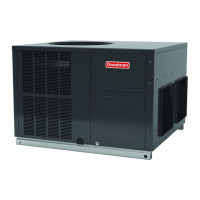
